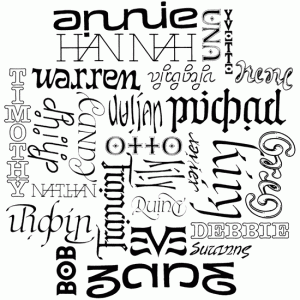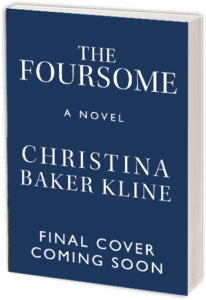Novelist and naming expert Pam Satran writes:
There’s a character named Billie in the novel I’ve been working on since the invasion of Iraq. But Billie wasn’t always in the book: Until this spring, she was Lily.
Well, she wasn’t really Lily, but the character who played her role in the plot was named Lily until the most recent draft. Lily was older – 23 to Billie’s 19 – a college graduate already living on her own in New York. Billie rides cross country with a stranger, her backpack full of her father’s ashes and a handgun.
I changed my character’s name (and persona) after reading Kate Atkinson’s When Will There Be Good News? Sixteen-year-old Reggie is alone in the world, yet winning and resourceful. I admired the way Atkinson wrote from Reggie’s point of view – third person, but intimate – and decided I wanted my character, Lily, to be more like Reggie.
To be, in other words, Billie.
I’m still not certain Billie is the right name for her. It feels a little obviously like the name of a scrappy tomboy, which is exactly what Billie is. Maybe it would be more interesting if her name were something ultra-feminine, like Seraphina? Plus one of my other main characters, whom Billie spends a lot of time with, also has a name that starts with a B, Bridget, and that name is carved in stone. As a reader, I hate it when character’s names or physical descriptions, even their hair colors, are too similar.
As the author of ten name books, I should have an easier time of naming my characters. But it’s just like naming children: No matter how much expertise you have, no matter how much thought you’ve put into it, it can still be difficult to settle on the perfect name for someone you love and cherish.
It’s easy for me to give certain kinds of name advice to fellow novelists. A girl born in the 1950s with sisters named Joanne and Debbie would more likely be Carolyn than Caroline, I recently told one friend, pointing to the popularity charts on my site Nameberry. Caroline was rarely used outside of the upper classes before the Kennedys popularized it in the early 1960s. Another character, born in the 1930s, might have been Lillian or Louise, but certainly not LeeAnn.
Yet I feel less certain about my own poor Billie. I’m going to take one more swing through the book, looking closely at that character, still wobbly. I hope that once Billie’s inner workings and story feel more solid to me, so will my decision about her name.
Pamela Redmond Satran is the author of five novels and ten bestselling baby name books, including Beyond Ava & Aiden. Her blog How Not to Act Old is becoming a book in August.

